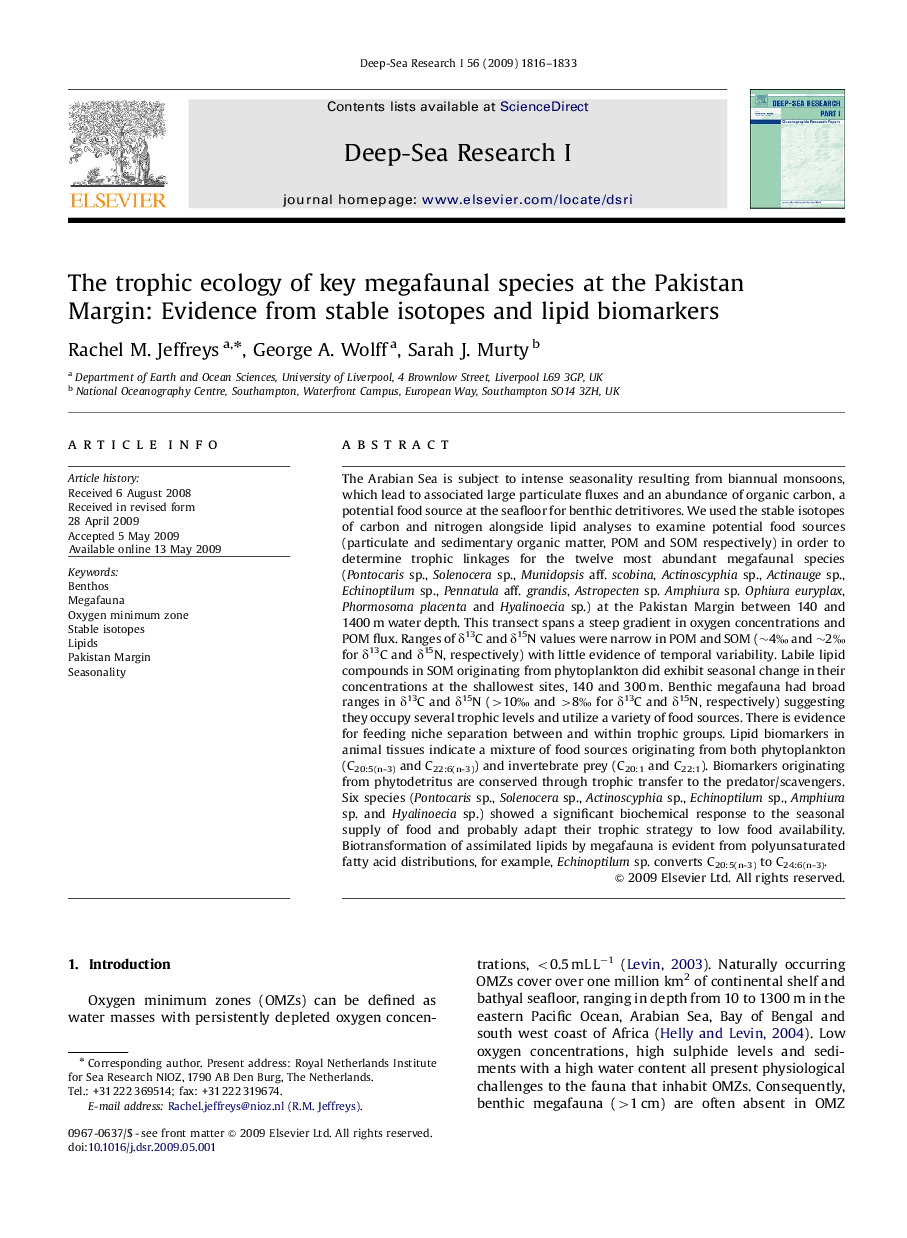| کد مقاله | کد نشریه | سال انتشار | مقاله انگلیسی | نسخه تمام متن |
|---|---|---|---|---|
| 4535205 | 1326090 | 2009 | 18 صفحه PDF | دانلود رایگان |

The Arabian Sea is subject to intense seasonality resulting from biannual monsoons, which lead to associated large particulate fluxes and an abundance of organic carbon, a potential food source at the seafloor for benthic detritivores. We used the stable isotopes of carbon and nitrogen alongside lipid analyses to examine potential food sources (particulate and sedimentary organic matter, POM and SOM respectively) in order to determine trophic linkages for the twelve most abundant megafaunal species (Pontocaris sp., Solenocera sp., Munidopsis aff. scobina, Actinoscyphia sp., Actinauge sp., Echinoptilum sp., Pennatula aff. grandis, Astropecten sp. Amphiura sp. Ophiura euryplax, Phormosoma placenta and Hyalinoecia sp.) at the Pakistan Margin between 140 and 1400 m water depth. This transect spans a steep gradient in oxygen concentrations and POM flux. Ranges of δ13C and δ15N values were narrow in POM and SOM (∼4‰ and ∼2‰ for δ13C and δ15N, respectively) with little evidence of temporal variability. Labile lipid compounds in SOM originating from phytoplankton did exhibit seasonal change in their concentrations at the shallowest sites, 140 and 300 m. Benthic megafauna had broad ranges in δ13C and δ15N (>10‰ and >8‰ for δ13C and δ15N, respectively) suggesting they occupy several trophic levels and utilize a variety of food sources. There is evidence for feeding niche separation between and within trophic groups. Lipid biomarkers in animal tissues indicate a mixture of food sources originating from both phytoplankton (C20:5(n-3) and C22:6(n-3)) and invertebrate prey (C20:1 and C22:1). Biomarkers originating from phytodetritus are conserved through trophic transfer to the predator/scavengers. Six species (Pontocaris sp., Solenocera sp., Actinoscyphia sp., Echinoptilum sp., Amphiura sp. and Hyalinoecia sp.) showed a significant biochemical response to the seasonal supply of food and probably adapt their trophic strategy to low food availability. Biotransformation of assimilated lipids by megafauna is evident from polyunsaturated fatty acid distributions, for example, Echinoptilum sp. converts C20:5(n-3) to C24:6(n-3).
Journal: Deep Sea Research Part I: Oceanographic Research Papers - Volume 56, Issue 10, October 2009, Pages 1816–1833